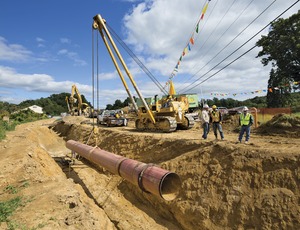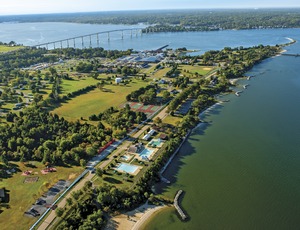

Collapsing crude oil prices and sagging prices for natural gas have left the North American energy sector reeling and led many hydrocarbon producers to plan sizable cutbacks in their 2015 drilling plans. But thanks to improved drilling techniques and a new focus on the most productive wells, U.S. oil and gas production is expected to continue rising this year—and probably next year too—and all that oil and gas will need to be transported from the wellhead to the end-user.
It would be an overstatement to say that pipeline construction is booming, but the level of activity in planning, designing and building projects remains high by historical standards, and it seems likely to stay that way.
 |
| LUMMA |
What it comes down to, Lumma says, is that new interstate and international pipeline projects backed by long-term contracts for their capacity "are still economically viable ... and continue to be a needed link" to move oil and natural gas—as well as natural gas liquids (NGLs) and condensate, an ultralight oil—to their various markets.
"These markets could be Gulf of Mexico export facilities for NGLs and condensate, and potentially crude oil," he says, "or regions of the U.S. where power generation facilities are switching from coal to natural gas" for environmental and other reasons. Also, several pipeline projects are underway to move billions of cubic feet per day (Bcf/d) of gas to new liquefied natural gas (LNG) export facilities along the Gulf, or to move gas from Texas and the Southwest into Mexico, where gas-fired powerplant construction is booming.
Aging system infrastructure is one major driver of pipeline work as networks developed decades ago do not match today's needs. For instance, who knew until recently that western North Dakota or the Denver-Julesburg Basin in northeastern Colorado would emerge as Kuwait-like centers of oil, gas and NGL production and would require a major pipeline network build-out?
A few years ago, the U.S. Northeast and Midwest depended heavily on natural gas piped long distances from production sites along the Gulf Coast and in the Gulf of Mexico. Now, thanks to burgeoning gas production in the Marcellus and Utica shale regions in Pennsylvania, West Virginia and Ohio, the northeastern quadrant of the U.S. is essentially self-sufficient in gas, and looking to begin "exporting" surplus gas to other regions.
"Greater supply and demand are the main drivers of new pipeline construction," says Don Santa, president and CEO at the Interstate Natural Gas Association of America (INGAA). "Now, with so much production in the Northeast, new pipeline is needed to get those supplies into the interstate network, which then can transport the gas to consuming markets."
The very definition of "long-distance" pipelines is changing; it used to mean pipelines that would run 1,000-plus miles, say from the Gulf Coast to the Northeast or the Midwest.
Now, no such cross-country projects are being planned, at least in the U.S. Instead, existing long-haul mainlines such as the 1,700-mile Rockies Express gas pipeline from Colorado to Ohio and Spectra Energy's 9,000-mile Texas Eastern system from Texas to New York City are being made at least partially bidirectional—that is, able to flow in either direction to allow westbound and southbound flows—and new pipeline capacity is being developed off these mainlines to feed new customers.
A Host of Planned Projects
Spectra, one of the nation's largest pipeline owners and developers, is planning several projects to reach new markets, says Tina Faraca, Spectra's vice president of engineering and construction, including the $3-billion Sabal Trail gas pipeline in the Southeast and the Ohio Pipeline Energy Network (OPEN) and NEXUS gas pipelines in the Midwest.

Post a comment to this article
Report Abusive Comment